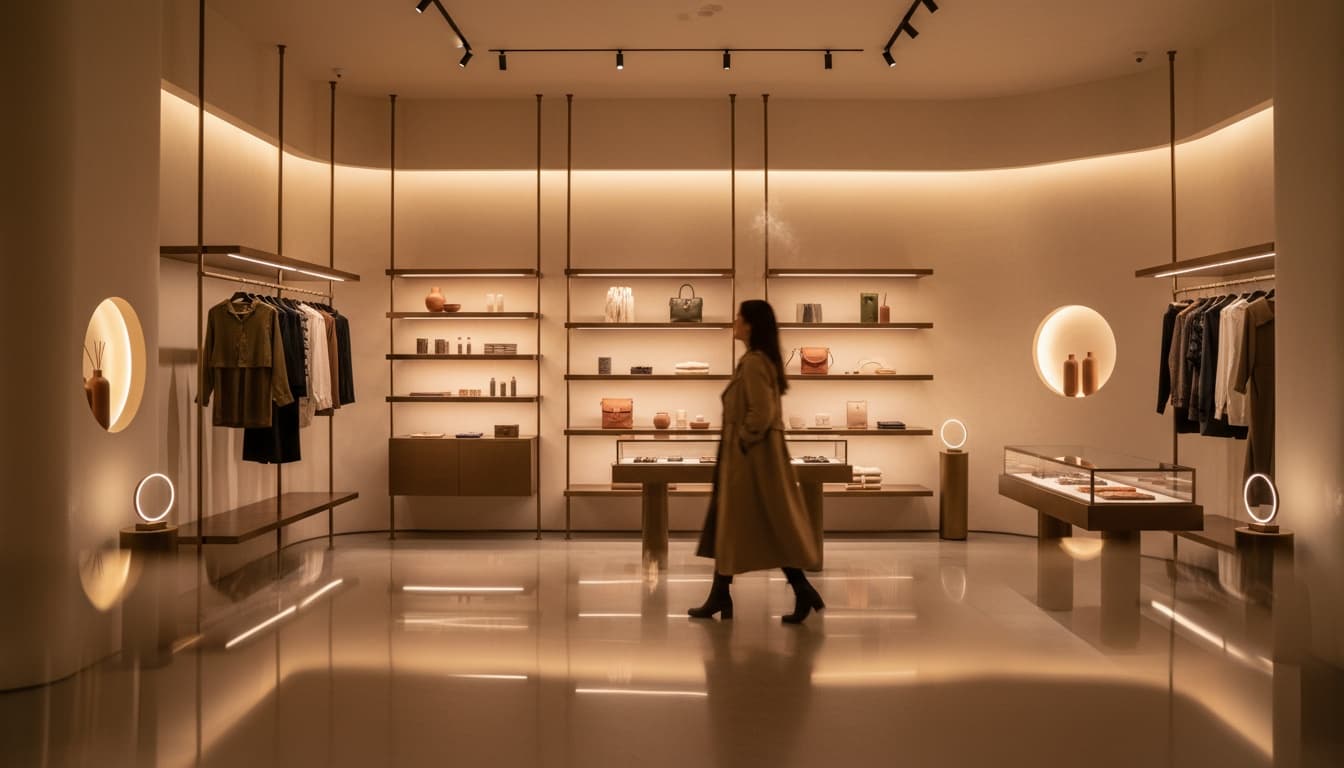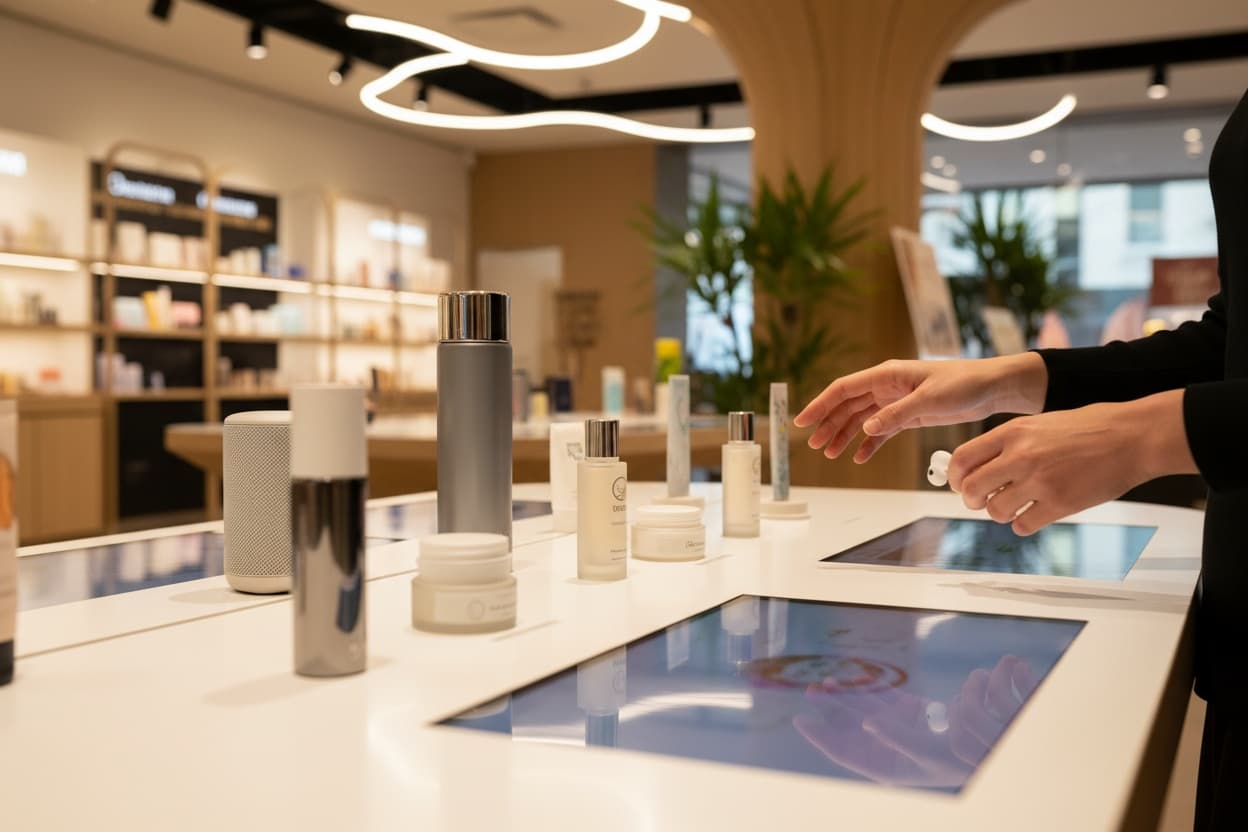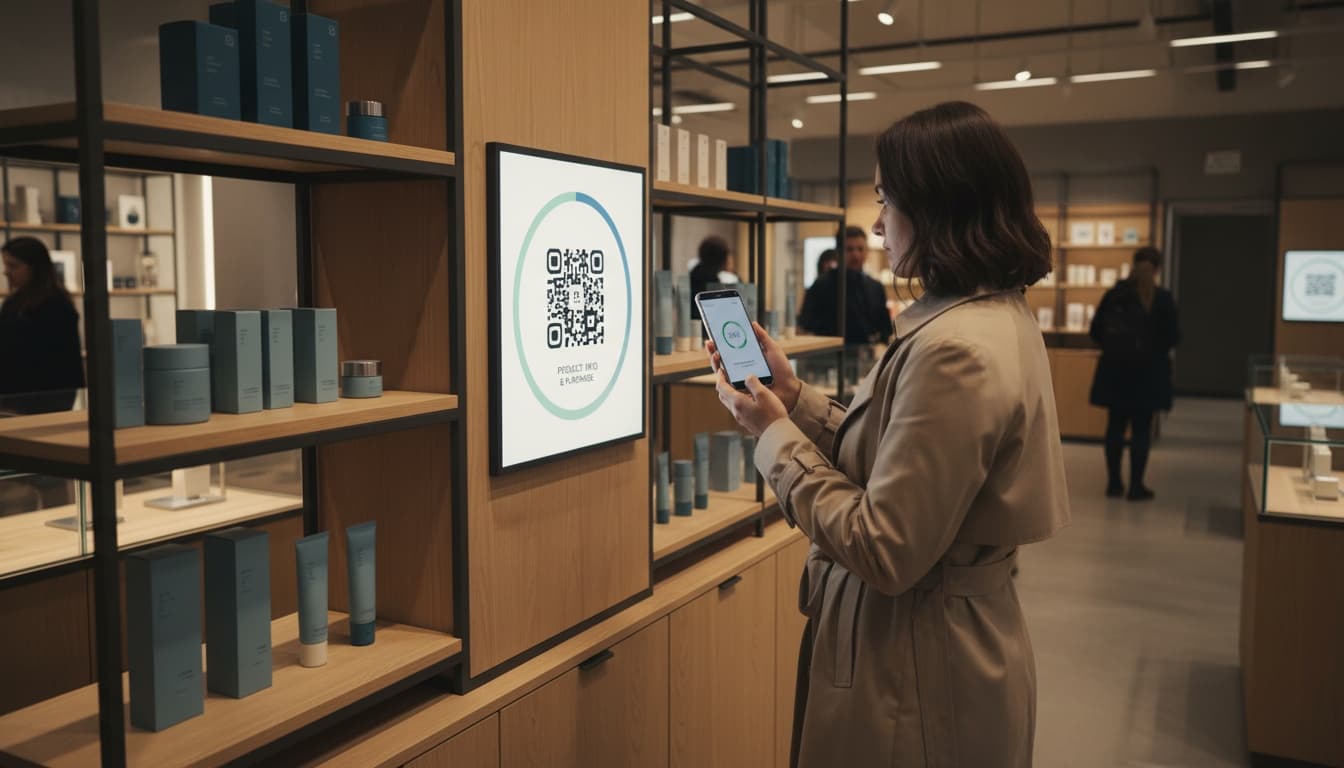In-store experience is one of the strongest drivers of conversion in physical retail. Shoppers decide within minutes whether they feel comfortable, inspired, and interested enough to explore. Great stores activate the senses, guide attention, tell stories, and use digital touchpoints to create moments that convert curiosity into revenue. This guide explains how to design an in-store experience that feels memorable, intuitive, and commercially effective.
Create in-store experiences that increase sales
Use sensory design and interactive touchpoints to shape customer behavior inside your store.
Design the sensory environment with purpose
Human perception plays a central role in purchasing decisions. Light, sound, temperature, scent, textures, and spatial layout all shape how customers feel during an in-store visit. When the environment is thoughtfully designed, shoppers stay longer, explore more products, and become more open to making a purchase. Retail psychology shows that sensory cues influence emotional response, which directly impacts revenue.

Small changes can lead to large outcomes. Warmer lighting near high margin items, softer sounds in browsing areas, or natural scents in lifestyle zones create positive emotional anchors. Retailers should also eliminate sensory noise such as harsh lighting or confusing layouts that reduce comfort and shorten dwell time.
Use product interaction zones to increase touch and trials
Customers are more likely to buy when they interact physically with a product. Touch, testing, and experimentation act as commitment signals. Create zones where customers can handle items freely, try variations, test features, or combine accessories. This approach works in fashion, cosmetics, electronics, furniture, and specialty retail.
High converting interaction areas include:
- Test tables or demo counters
- Try-on stations with mirrors and accessories
- Product sample bars
- Material or texture walls
- Hands-on tech demo setups

Physical interaction reduces perceived risk. When customers feel, compare, or test items, they imagine the product in their lives, making purchase decisions more natural. This is why the most innovative stores place interaction zones at strategic points in the in-store journey.
Use storytelling to make the store emotionally compelling
Products become more valuable when there is a story behind them. Storytelling helps customers understand the origin, purpose, sustainability, craftsmanship, or inspiration behind each item. It elevates the emotional meaning of the purchase and transforms the store from a product grid into a narrative space.
Effective storytelling elements include:
- Behind-the-scenes content
- Founder or maker stories
- Brand values displayed visually
- Product creation journeys
- Short-form video content triggered by QR codes
Strategically placed storytelling zones create moments that stop customers and motivate them to explore deeper. Linking storytelling to interactive QR ads builds a bridge between emotion and action and makes your in-store communication measurable.
Use retail psychology to guide behavior and increase conversions
Retail psychology focuses on how customers move, decide, and emotionally respond inside a store. You can use these principles to guide shoppers toward high margin areas, increase trial, reduce hesitation, and create memorable moments that drive sales.
Create a natural in-store flow
Customers should always know where to go next. Use lighting, spacing, and product grouping to guide their path. Avoid dead ends or confusing transitions that interrupt the in-store journey.
Place high impact items at eye level
Eye-level positioning increases visibility and improves the chance of interaction. Group items by intent or purpose to reduce cognitive effort and help customers orient themselves faster.
Reduce decision fatigue with curated choices
Too many options slow down the shopping process and can push customers to postpone decisions. Curated sections help customers feel more confident and reduce the chance of leaving without buying.
Use social proof to validate decisions
Highlight best sellers, customer favorites, or staff picks. These signals reassure customers and accelerate purchasing decisions, especially in higher priced categories.
Integrate digital touchpoints to create hybrid in-store experiences
Digital elements reinforce the physical journey and help customers engage with products in deeper ways. QR codes, interactive screens, mobile moments, and rewards create a hybrid retail environment that feels modern and intuitive.

Examples of powerful digital touchpoints include:
- Scan to watch a demo
- Scan to unlock a reward
- Scan to compare products
- Scan for style recommendations
- Scan to join a challenge or mission
When tied to smart retail experiences, these touchpoints create measurable engagement loops that increase revenue and improve customer memory. They also make the in-store journey feel connected to the broader digital ecosystem of the brand.
Build micro moments that encourage repeat visits
In-store experience does not end at checkout. Use post visit digital moments to strengthen memory and drive customers back. A small reward, a reminder, or a relevant piece of content keeps your brand active in the customer's mind. These micro interactions help transform a one time buyer into a returning customer.
For example, a customer can scan a QR code at checkout to receive a visit badge, a small loyalty boost, or a personalized recommendation for their next visit. These simple touchpoints extend the in-store experience beyond the physical visit and build a habit of coming back.
Create in-store experiences that emotionally connect
Emotional connection is the most powerful driver of loyalty. Stores that feel human, immersive, and memorable create long lasting relationships. Use design, lighting, storytelling, interactivity, and rewards to create a loop where customers explore, engage, return, and recommend.
Turn your store into a high conversion in-store experience
Create sensory environments, interactive touchpoints, and memorable journeys that increase sales and repeat visits.

